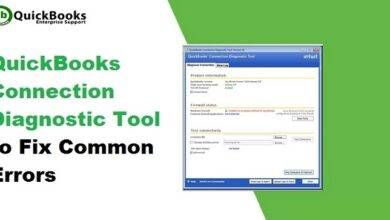
Did you know that the average website conversion rate is between 1% and 3%? That matters because you have to have a guideline to track your website’s success.
Too many small business owners don’t bother to look at website traffic statistics. They find analytics confusing or they don’t have the time to look at them.
The reality is that you need to check website traffic statistics on a regular basis. You need to know if you’re reaching your business goals or not.
How can you learn how to see website traffic and how it impacts your bottom line? Read on to learn the top tips to check website traffic. techktimes.com
- Set Business Goals
There are dozens of ways to measure website traffic. You don’t need to use all of the measurements available. You just have to use the ones that align with your business goals.
You can’t just say that you want more sales. You need to have specific and quantifiable goals. For instance, you want to increase website orders by 10% in the next three months.
Think about how your website serves your business. If it’s a static website that serves as a brochure, you might just want to measure the number of website visitors.
- Learn Basic Website Traffic Statistics Terms
How much do you know about website traffic terminology? There are some basic things to know so you can read and interpret analytics reports.
Impression: An impression is a website page view.
Bounce Rate: This is the percentage of people who leave your site after one page. You want to have a low bounce rate of about 70% or lower. A high bounce rate means that your content doesn’t match the needs of the user or you have performance issues.
Conversion: This is when a visitor takes a specific action on your website. You can measure conversions based on email sign-ups, booked appointments, or sales.
- Map Your Funnel
Customers don’t visit your website for the first time and take action. Customers go through stages before that happens.
They might first become aware of your site from social media. They’ll do research and compare your business to others. They’ll take action when they feel they can trust your business and they’re ready to act.
You want to map out the various steps of this journey because you can measure each step. For instance, you can measure traffic to a landing page and conversions.
- Choose the KPIs
You have your business goals and customer journey laid out. How do you measure them? You need to choose the right key performance indicators that correspond with your business goals.
Let’s say that you want to increase your traffic from search engines. You’ll take a baseline measurement now of your search engine traffic and continue to measure it.
You might be more interested in the ROI for certain marketing strategies. You’ll choose the KPIs that help you measure the goals you set.
- Pick the Right Analytics Tools
The problem with many analytics tools is that they have a steep learning curve. They’re useful tools, but they lose their effectiveness if you don’t know how to use them.
You want to pick tools that allow you to measure your KPIs. You also want something simple and easy to use.
If you want to measure the effectiveness of SEO, you’ll want a tool that tells you about your keywords, organic traffic. Click to learn more about a free tool that does that and lets you compare your site against others.
Google Analytics and Search console are other free tools that you can use to measure website traffic statistics.
- Learn How to Read Data
Did you know that one of the highest-paying jobs right now is a data analyst? The average salary for data analysts is above $66,000 a year.
What makes these people so valuable is that they look at the numbers and tell you what they mean. An analyst might get unusable spreadsheets full of numbers and turn them into charts and reports. They tell you the stories behind the numbers.
You don’t need to be a full-on analyst, but you should be able to extract meaning from your website traffic statistics.
For instance, your site has a high bounce rate. There could be a number of reasons behind it. Your website could load slowly or you’re getting traffic from the wrong places.
You need to make assumptions about user behavior and narrow down your assumptions. In this case, you’d check your site speed. If that looks fine, then you’ll need to analyze your traffic sources and content. You can make adjustments according to your analysis.
- Have a System for Checking Analytics
There are business owners that obsess over website analytics. They check website traffic statistics every few minutes to see if a social media campaign works or if an email made an impact on traffic.
You don’t need to measure your site traffic every day. That takes time and energy away from your business.
Come up with a system to analyze your traffic. You might check your statistics on a weekly or monthly basis. Your next step is to have a meeting with your marketing team to go over the results and decide if you have to make changes.
How to Check Website Traffic Statistics
There’s an art and science to understand website traffic statistics. You have to align your analytics with your business goals and see the whole customer journey play out.
The tips in this article showed you the basic steps to read website traffic.
Once you check your numbers, you have to know what they mean through a website traffic analysis. That’s how you understand the reasons behind customer behavior. You can work on creating a website that gets results.
Be sure to check out the Digital Marketing section of this site to learn great tips to drive traffic to your site.




